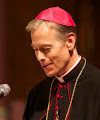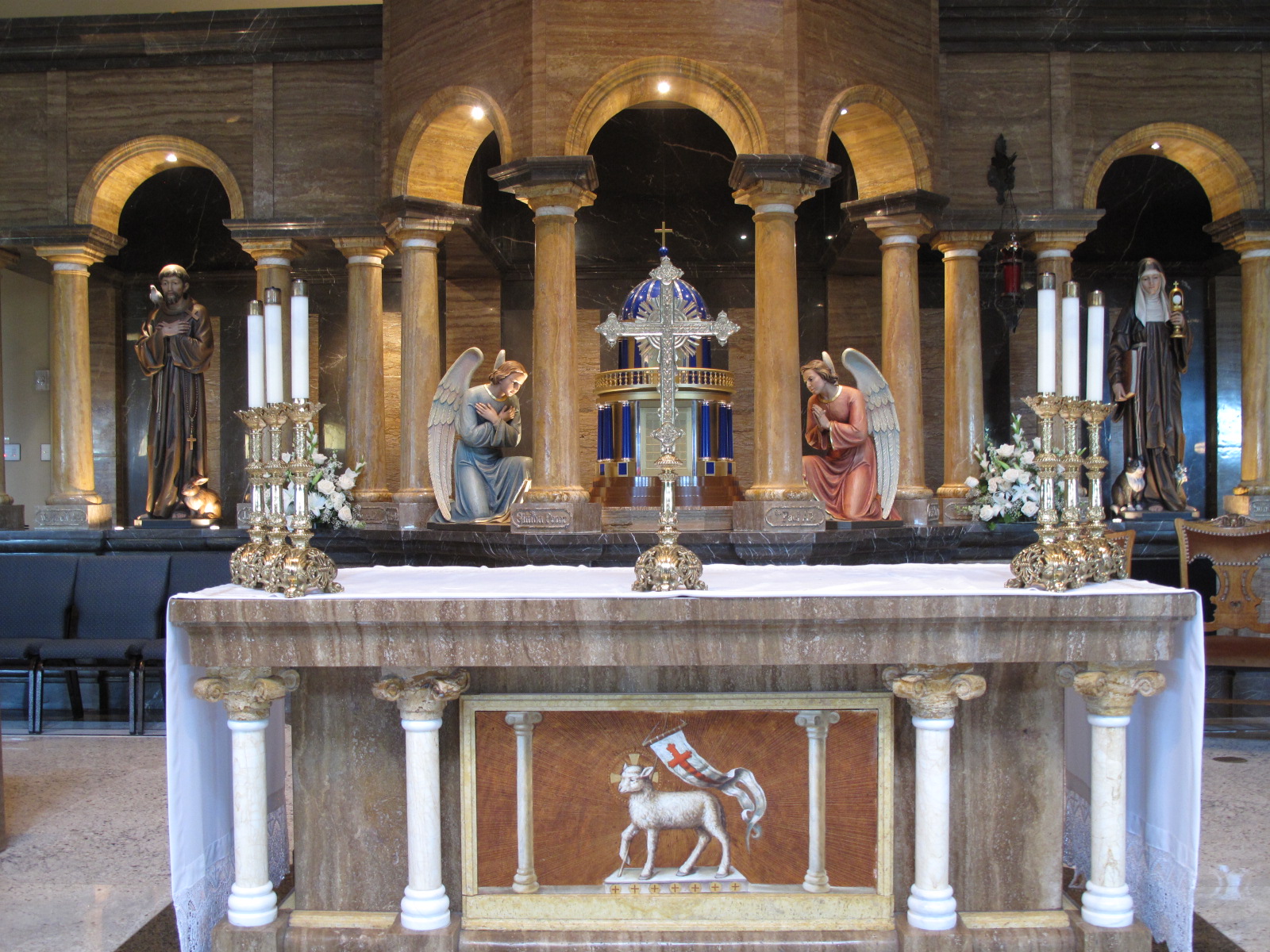Registration for the 2014 Winter Chant Intensive: Special Edition in Surprise, AZ, January 3-4, is open. Registration deadline is December 20. Join the revolution! Register now.
Author Archives: SacredMusic
2014 Winter Chant Intensive Registration is Open
- Monday, 14 October 2013 06:35
- SacredMusic
- 0 Comments
Winter Chant Intensive 2014: Special Edition for Intermediate to Advanced Chanters
- Tuesday, 08 October 2013 20:37
- SacredMusic
- 0 Comments
January 3 and 4, 2014
St. Clare of Assisi Catholic Church in Surprise, Arizona
Join the CMAA in Surprise, Arizona this coming January for a special, two-day edition of the famed Chant Intensive. Making a bit of a detour from our usual offering for beginning to intermediate chanters, this year’s intensive includes two separate tracks for intermediate to advanced chanters who are interested in furthering their studies of the Gregorian modes or developing their skills conducting chant.
The Courses
Not Your Mother’s Modes; Dr. Edward Schaefer

We’ll do a deep dive into the underworld of the modes: archaic modes, the development of the Octoechos, the Octoechos itself (ecclesiastical modes), pentatonic structures, modal evolution, modal transposition (not what it appears to be), and the function of degree scales in the various modes… and what it all means with regard to the interpretation of chant. Whew! You will be surprised at how much fun we’ll have…in Surprise, AZ.
Chironomy for Chanters; Dr. Jennifer Donelson
Designed with the those who would like to direct or start their own scholas in their parishes, this course will give participants a rhythmic foundation for singing chant, an understanding of the conducting style necessary for beautiful renditions of the chant, and ideas about how to communicate well with the schola and manage a rehearsal. Beginning with a refresher course on the basics of the rhythmic approach of the “old Solesmes” method, participants will learn the fundamental rules of chironomy (directing) for Gregorian psalm tones, as well as neumatic and melismatic chants in the Gregorian repertoire.

Jennifer Donelson is an assistant professor of music at Nova Southeastern University in Fort Lauderdale, Florida. She currently serves as a board member of the Society for Catholic liturgy and as the associate managing editor of the CMAA’s Sacred Music journal. Having studied Gregorian chant at the Catholic University of America and Abbey of St. Peter in Solesmes, Dr. Donelson has served as the director of music at St. Gregory the Great Seminary (Diocese of Lincoln, NE) and St. Thomas Aquinas Newman Center (UNL). She currently directs the schola cantorum at the Mission of Sts. Francis and Clare in Miami, where the extraordinary form of the Roman Rite is celebrated weekly.
Location and Details
Both courses will be held at St. Clare of Assisi Catholic Church in beautiful Surprise, Arizona. The program will run all day Friday and Saturday, January 3 and 4, from 9:00am to 5:00pm each day. Two days of work will culminate in a sung vigil Mass in the ordinary form with propers for the Solmenity of the Epiphany. Full schedule and accommodations links forthcoming.
Tuition
The cost of the two-day course, which includes instruction, materials, breaks and a catered lunch on both Friday and Saturday is $190.
Registration Deadline
The deadline for registration is December 20, 2013.
Accommodations
Information forthcoming
To Register
Registration for this event is now closed.
For questions, call 334.444.5584 or send an email.
Celebrating the Spirit of the Liturgy
- Friday, 12 July 2013 10:43
- SacredMusic
- 0 Comments
 We are pleased to present to you an absolutely brilliant address by Archbishop Alexander Sample of Portland, Oregon, delivered at the CMAA colloquium, Salt Lake City, Utah, June 19, 2013
We are pleased to present to you an absolutely brilliant address by Archbishop Alexander Sample of Portland, Oregon, delivered at the CMAA colloquium, Salt Lake City, Utah, June 19, 2013
You can download Abp. Sample’s lecture here (PDF), or view it below:
Celebrating the Spirit of the Liturgy
Recordings from Sacred Music Colloquium 2013
- Thursday, 04 July 2013 03:26
- SacredMusic
- 0 Comments
They are all now up and available. All music is in the commons so please feel free to take them and use them as you see fit. Mostly, we hope they serve as an example of the possibilities within the Roman Rite.
The catafalque at this year’s Sacred Music Colloquium
- Sunday, 09 June 2013 13:10
- SacredMusic
- 0 Comments
Each year at the Colloquium, we offer a Requiem Mass for the deceased members of the CMAA. Since the Motu Proprio, “Summorum Pontificum” in 2007, we have had the option of offering the Mass in the Extraordinary Form of the Roman Liturgy as well. This year we will celebrate a Solemn Requiem Mass with Absolution at the Catafalque. This practice was prescribed for All Souls Day as well as any Solemn Mass for the dead where the body was not present. This practice could be somewhat unsettling if one is not used to it, or doesn’t understand it.
Our faith, heavily permeated by the theology of the Incarnation, uses things to convey spiritual realities. The highest realities, of Divine institution, are the Sacraments. The greatest sacrament is of course the Holy Eucharist, where the elements of bread and wine are changed into the Body and Blood of our Lord. Sacramentals, or blessed objects, are used to dispose us to the many graces that come from God. Finally, symbols, art, music and architecture lift the mind and the heart to God.
The catafalque is either an empty casket or a wooden form made to look like a casket that is covered by the black pall and surrounded by six unbleached (orange) candles (when they are available); it is a symbolic representation of the deceased. When it is present, the priest sings the absolution for the deceased as if the body was present. The body was the Temple of the Holy Spirit and must be shown the greatest respect, even symbolically.
The use of the catafalque also calls to mind the stark reality of death and judgment, but in contrast, the hope of God’s mercy and redemption. We offer the absolution for the dead and we pray that we will be prepared for death. We realistically and vividly face the reality of death and just as realistically and vividly we profess our belief in the Resurrection. Our faith is strong―even stronger―by meditating upon the death we know will come to all of us.
